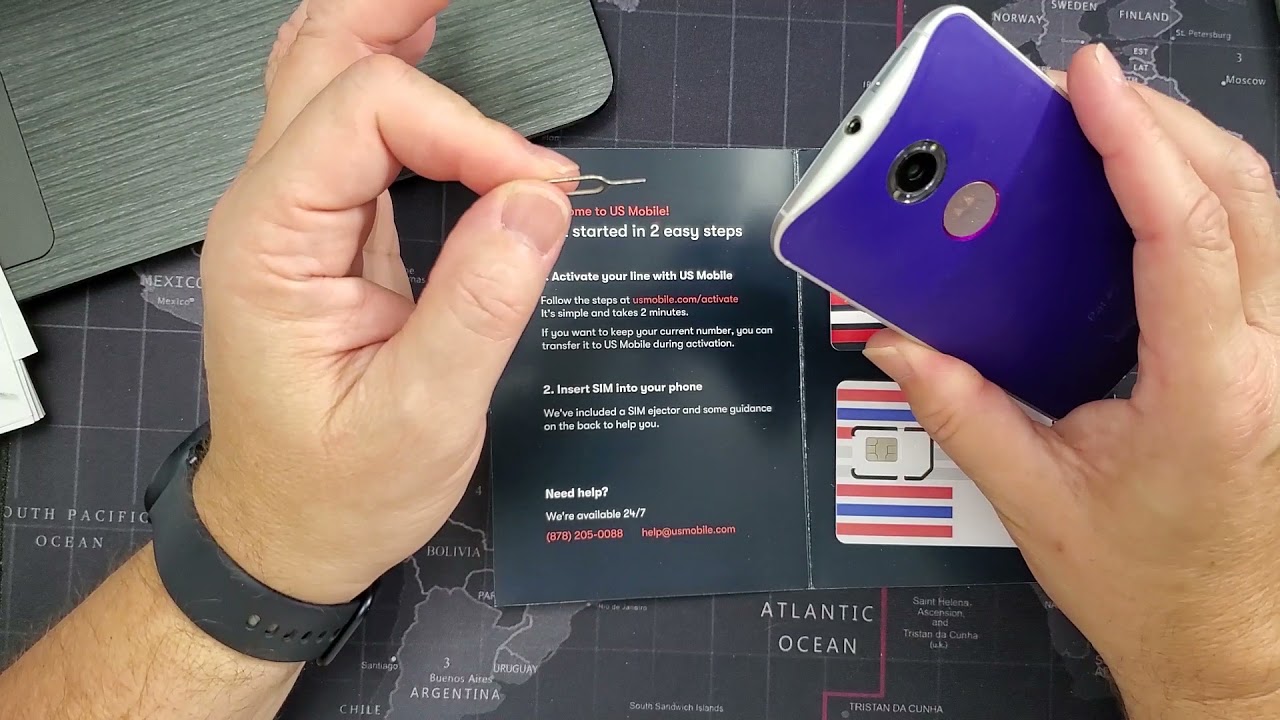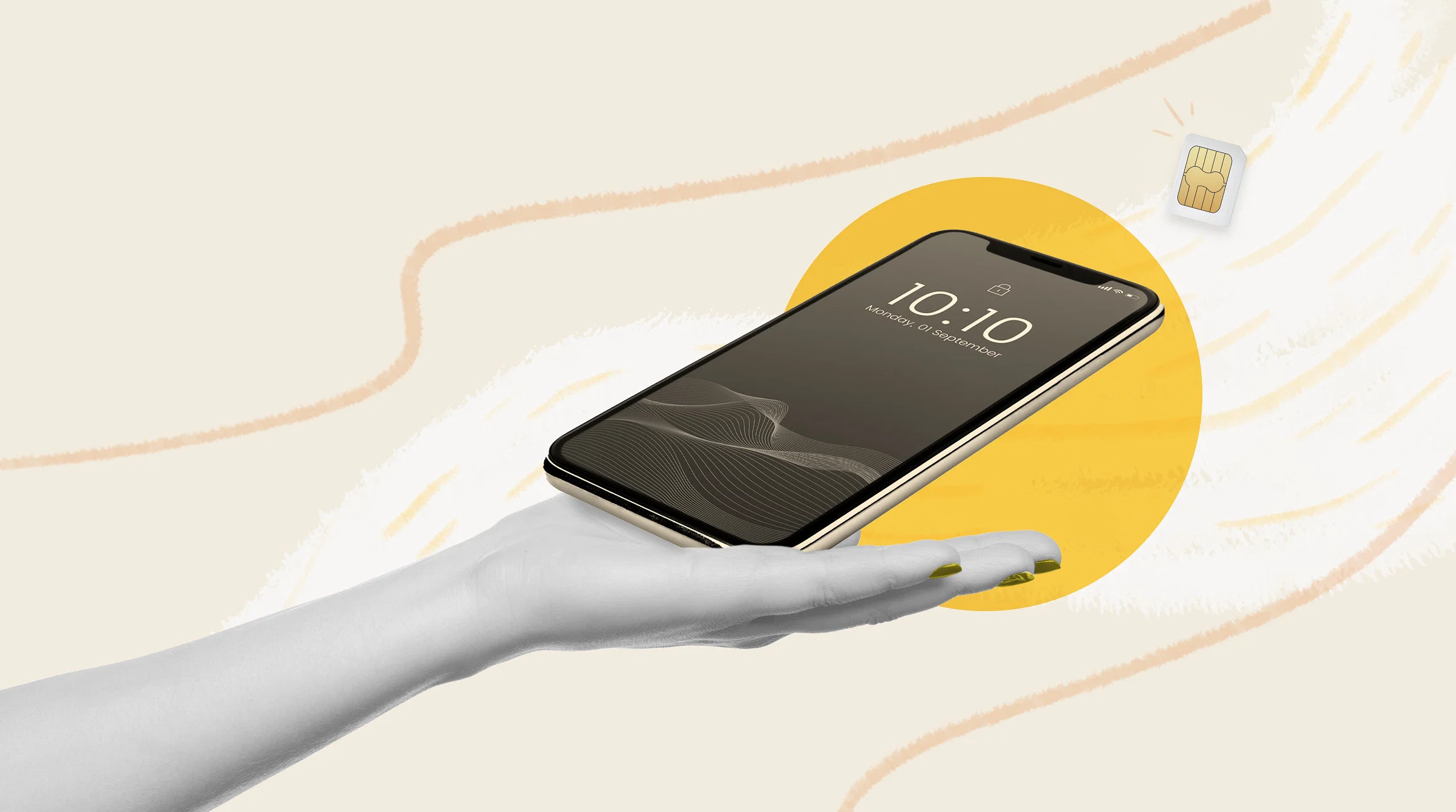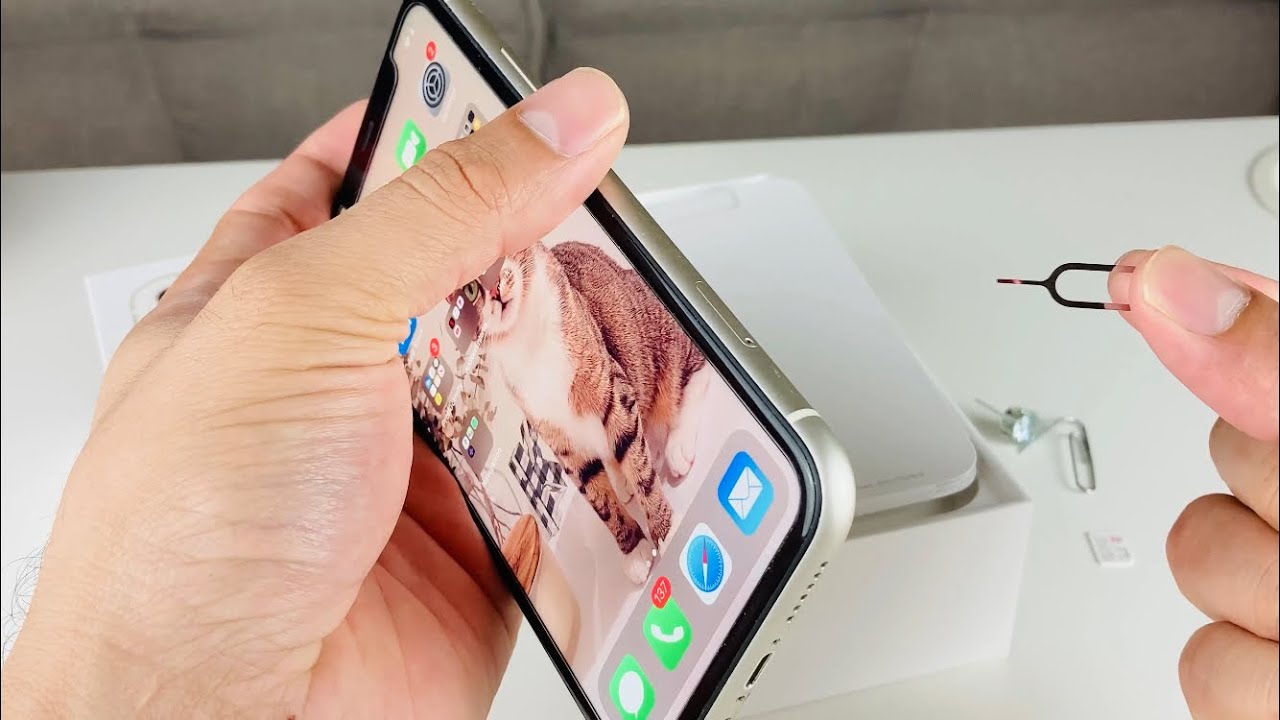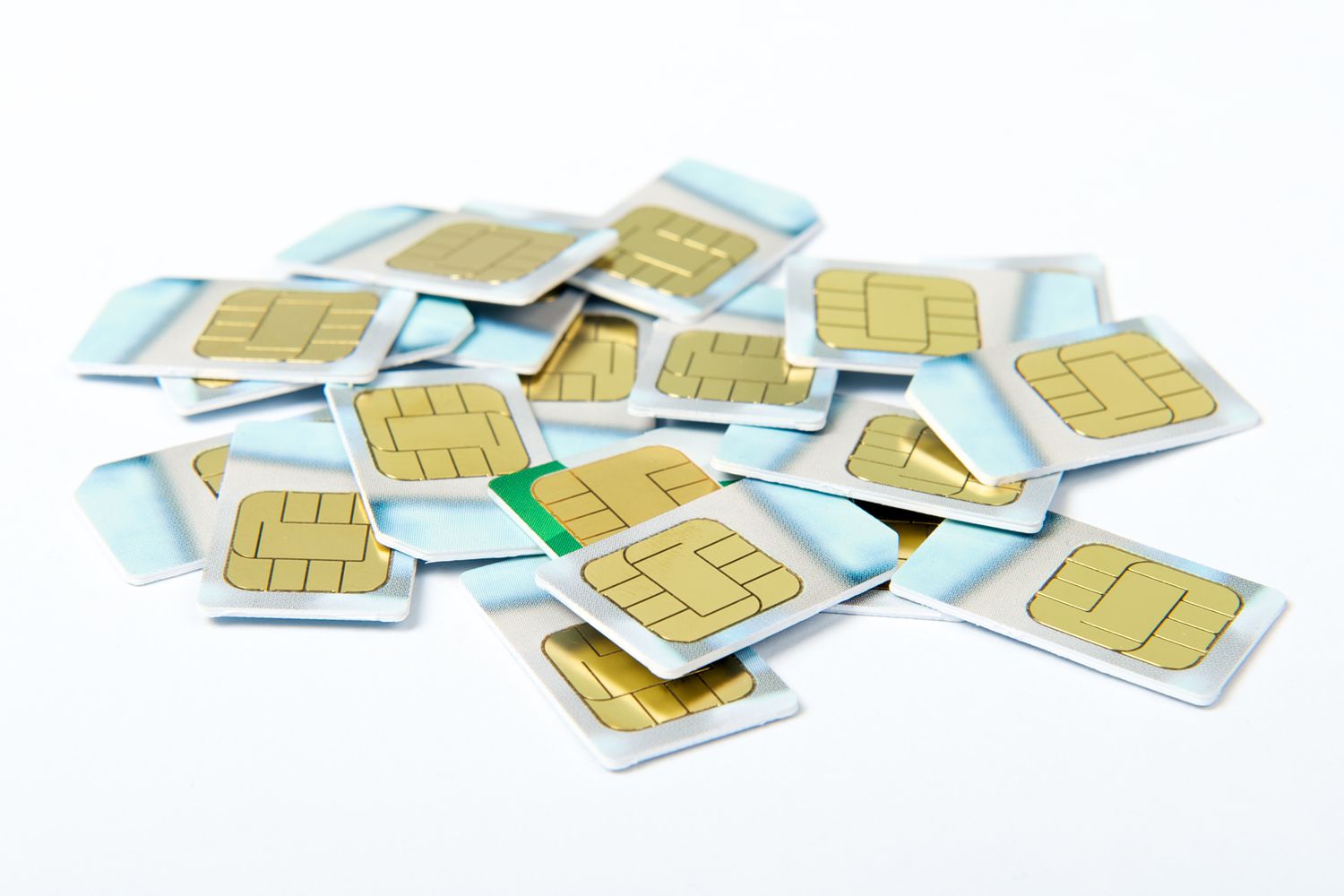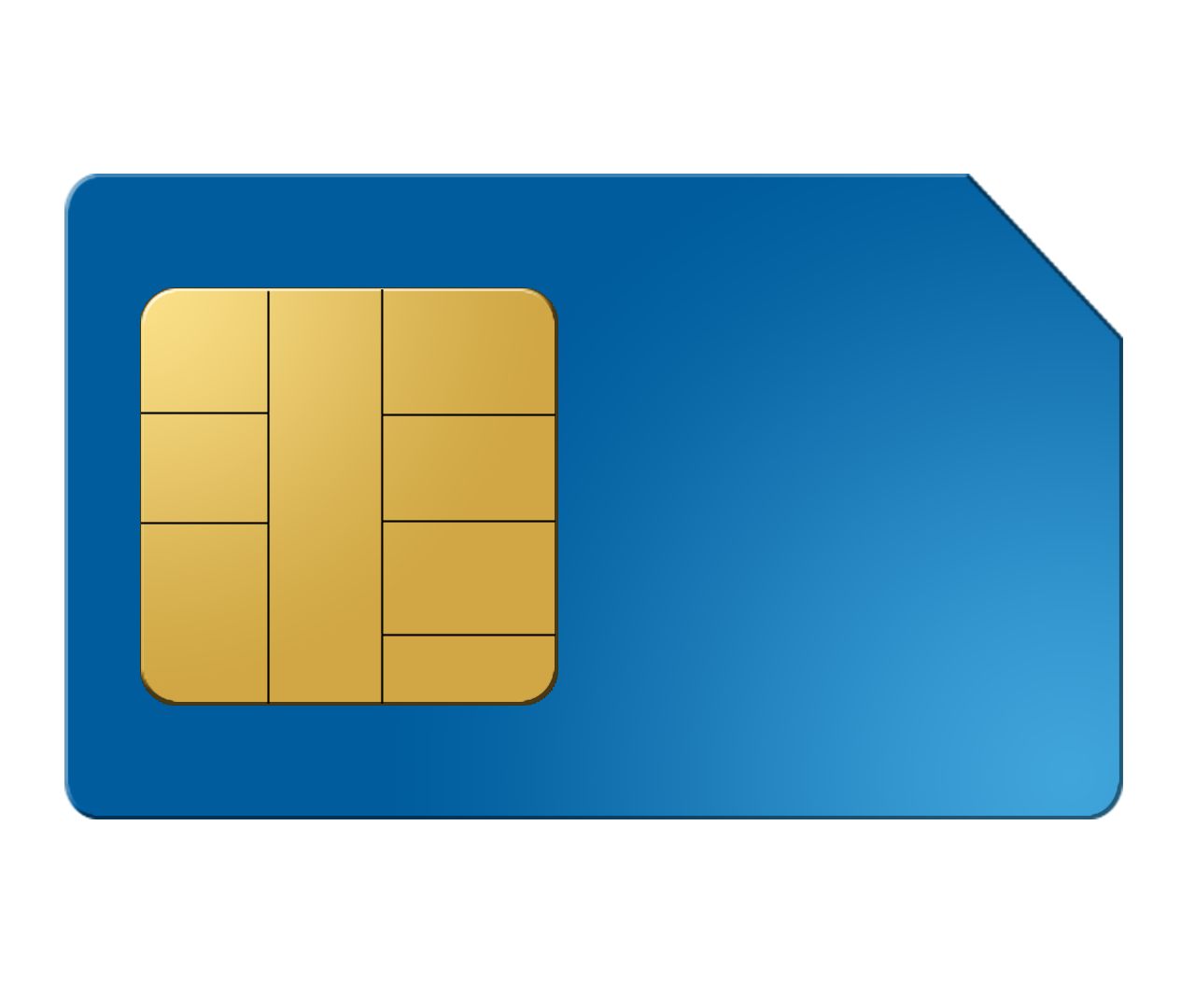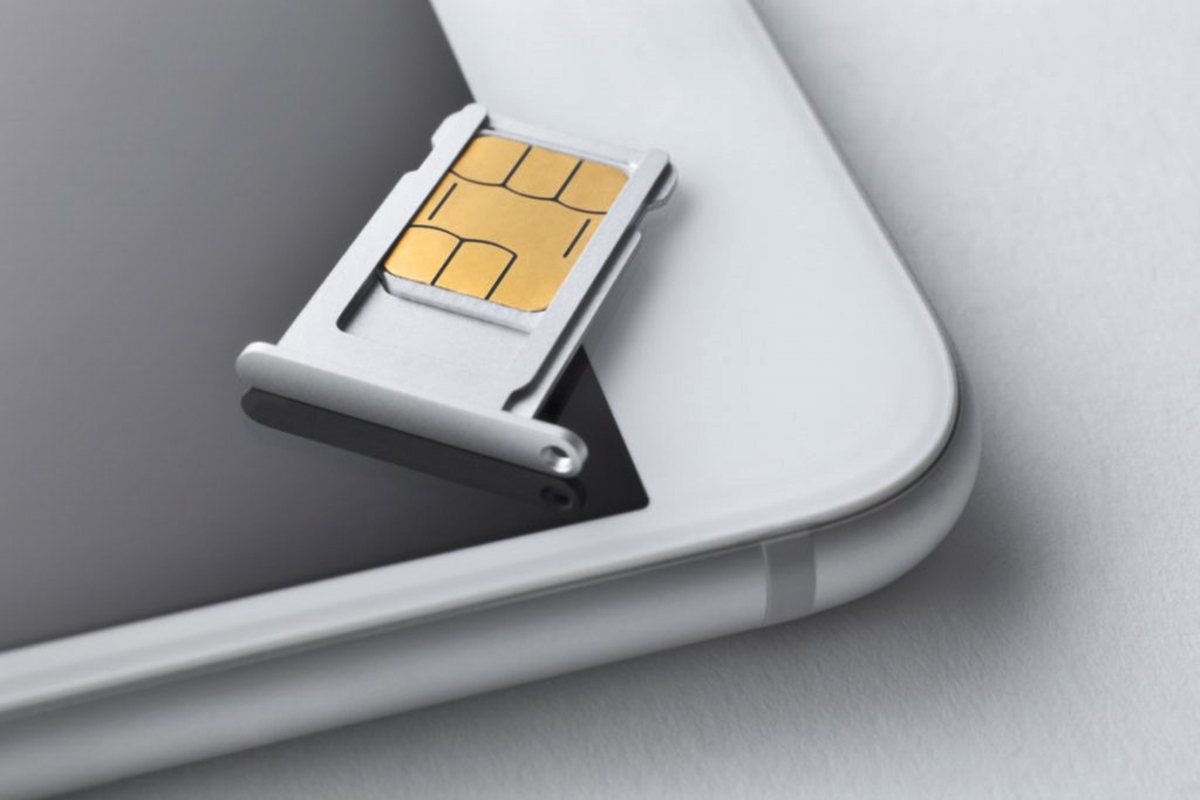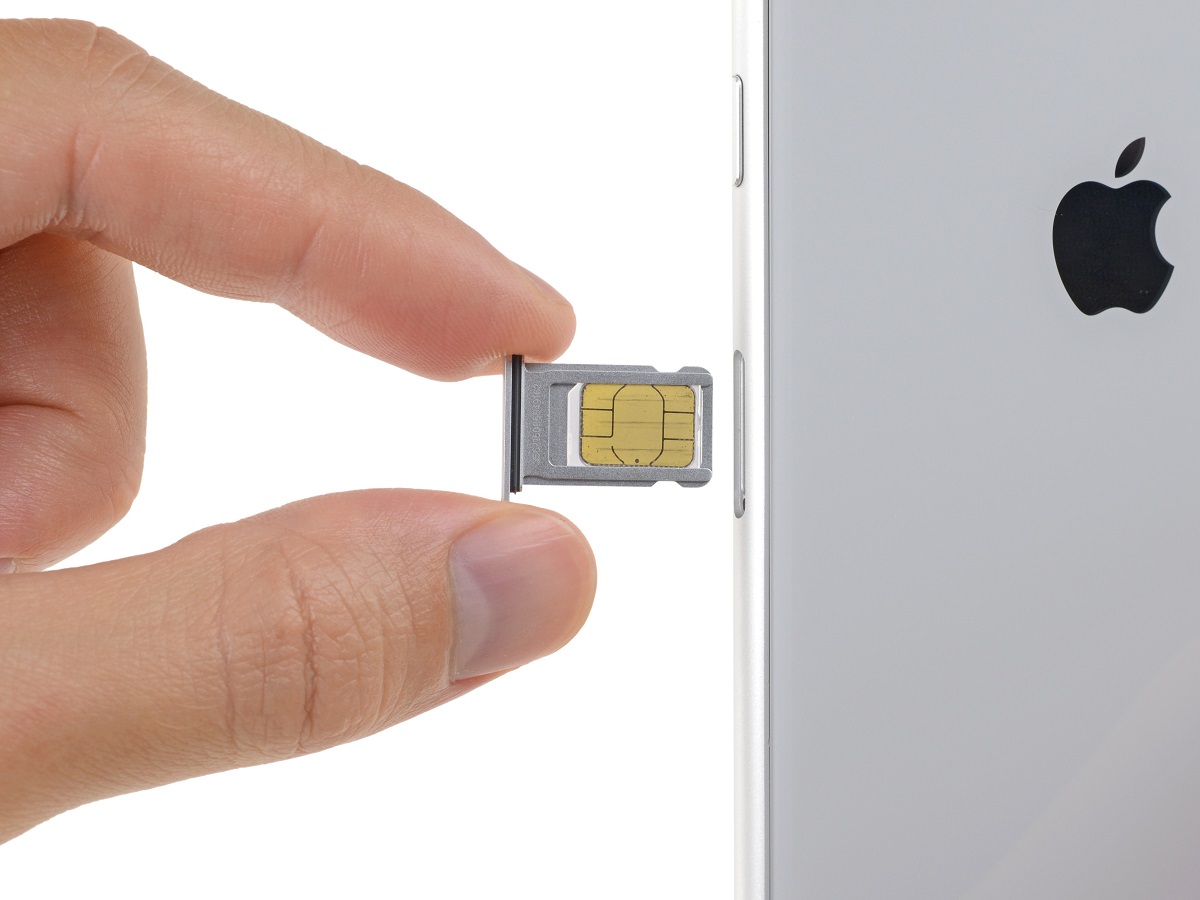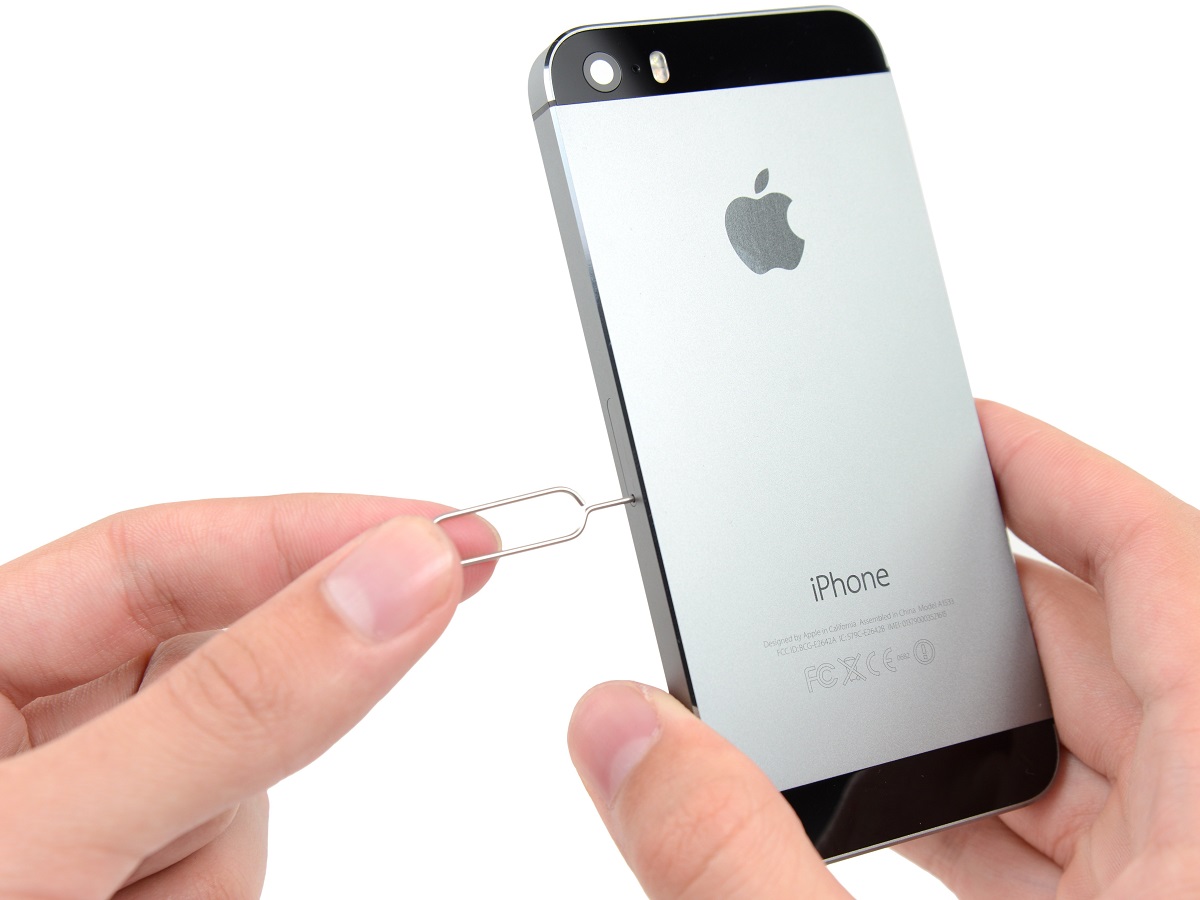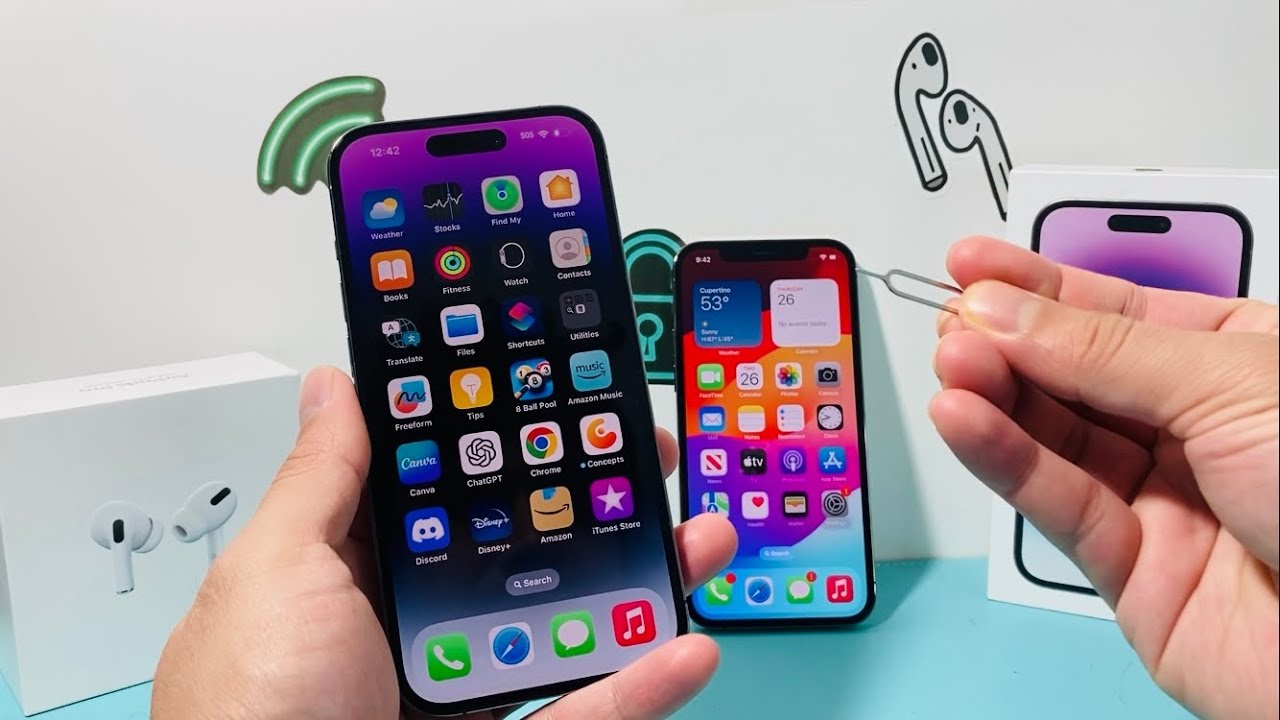Introduction
Connecting a SIM card to a phone is a fundamental step in setting up a mobile device for communication. The SIM card, or Subscriber Identity Module, is a small, removable card that stores crucial information, such as the user's identity, phone number, and network authorization data. When you acquire a new phone or switch to a different mobile service provider, you'll need to connect a SIM card to the device to enable calling, texting, and accessing mobile data.
Understanding how to properly connect a SIM card to a phone is essential for anyone who owns a mobile device. Whether you're upgrading to a new phone, replacing a lost or damaged SIM card, or switching to a different network, the process of connecting a SIM card remains a critical aspect of mobile device setup. By following the essential steps outlined in this guide, you can ensure a seamless and successful connection between your SIM card and your phone, allowing you to stay connected with friends, family, and the digital world at large.
The process of connecting a SIM card to a phone may vary slightly depending on the specific model of your device. However, the basic principles remain consistent across most modern smartphones. By familiarizing yourself with these essential steps, you can confidently navigate the process of connecting a SIM card to your phone, empowering you to make the most of your mobile communication capabilities.
Next, let's delve into the specific steps required to connect a SIM card to your phone, ensuring that you can enjoy the full functionality of your mobile device.
Step 1: Power off the phone
Before embarking on the process of connecting a SIM card to your phone, it's crucial to begin by powering off the device. This initial step is essential for ensuring the safety of both the phone and the SIM card during the installation process. By powering off the phone, you minimize the risk of potential damage to the device's internal components and prevent any interruptions that may arise during the SIM card insertion.
To power off your phone, locate the power button, which is typically situated on the side or the top of the device. Press and hold the power button until the on-screen prompt appears, allowing you to shut down the phone. Once the shutdown process is initiated, wait for the device to power down completely before proceeding to the next step.
Powering off the phone provides a stable and secure environment for handling the SIM card and accessing the SIM card slot. This precautionary measure reduces the likelihood of electrical interference and safeguards the integrity of both the phone and the SIM card. By taking the time to power off the phone before proceeding, you demonstrate a responsible approach to device maintenance and ensure a smooth transition as you prepare to connect the SIM card.
Additionally, powering off the phone sets the stage for a focused and unhurried SIM card installation process. It allows you to concentrate on the task at hand without the distraction of incoming notifications or calls, enabling you to carry out each step with precision and care. This deliberate approach contributes to the overall success of connecting the SIM card to the phone and promotes a sense of confidence and mastery in managing your mobile device.
In summary, powering off the phone serves as the foundational step in the process of connecting a SIM card to a phone. It establishes a secure environment for the subsequent actions, reduces the risk of potential damage, and fosters a focused approach to the task at hand. By adhering to this initial step, you set the stage for a seamless and successful SIM card installation, ensuring that your phone is primed and ready to embrace the new connection.
Step 2: Locate the SIM card slot
After powering off your phone, the next crucial step in connecting a SIM card is to locate the SIM card slot on your device. The SIM card slot is where the SIM card will be inserted to establish a connection with the mobile network and enable communication features on your phone. The location of the SIM card slot may vary depending on the specific make and model of your phone, but there are common placements you can look for.
On most smartphones, the SIM card slot is typically located on the side of the device. It may be situated on the upper or lower edge, and in some cases, it could be on the opposite side of the volume buttons. The SIM card slot is usually identified by a small pinhole or a tray with a tiny ejector pin symbol. Some phones may have a removable back cover, with the SIM card slot positioned beneath the battery compartment. However, with the prevalence of sleek and modern designs, many smartphones now feature a SIM card tray that can be accessed by using a SIM card ejector tool or a paperclip.
To locate the SIM card slot on your specific phone model, refer to the user manual or the manufacturer's website for detailed instructions. If you're unable to locate the SIM card slot based on visual inspection, it's important to avoid applying excessive force or attempting to open any components forcefully. Instead, rely on official guidance to ensure that you handle the phone with care and precision.
Upon identifying the SIM card slot, take a moment to familiarize yourself with its design and location. This will help you approach the subsequent step of inserting the SIM card with confidence and accuracy. By understanding the placement of the SIM card slot, you can proceed with the installation process smoothly, without the need for trial and error.
Locating the SIM card slot is a pivotal part of the SIM card connection process, as it sets the stage for the upcoming step of inserting the SIM card. By taking the time to identify the slot and understand its positioning on your phone, you demonstrate a meticulous and detail-oriented approach to handling your device. This careful consideration ensures that you can proceed with the next step of the process with clarity and assurance, paving the way for a successful SIM card installation.
In summary, locating the SIM card slot is a foundational step that prepares you for the subsequent action of inserting the SIM card into your phone. By understanding the placement and design of the slot, you position yourself for a seamless and accurate SIM card connection, ultimately enabling your phone to access the mobile network and unlock its full communication potential.
Step 3: Insert the SIM card
With the SIM card slot located and the phone powered off, the next pivotal step in connecting a SIM card to your phone is the precise insertion of the SIM card into the designated slot. This step requires careful attention to detail and a steady hand to ensure that the SIM card is properly positioned for seamless functionality.
Begin by identifying the SIM card tray or slot on your phone. Depending on the model, you may need to use a SIM card ejector tool, a paperclip, or your fingernail to gently press the eject button, which will release the SIM card tray. Once the tray is accessible, carefully remove it from the phone, taking note of its orientation and the position of the SIM card slot within the tray.
Inspect the SIM card itself, noting the shape and size. Most modern smartphones utilize a nano-SIM, which is the smallest and most commonly used SIM card size. Align the SIM card with the designated area on the tray, ensuring that the metal contacts on the SIM card align with the corresponding contacts within the slot.
Gently place the SIM card onto the tray, taking care not to force it into position. The SIM card should fit snugly within the slot without any protrusion. Once the SIM card is in place, carefully slide the tray back into the phone, ensuring that it is inserted in the correct orientation and aligns seamlessly with the phone's housing.
It's important to exercise caution and precision during this step, as improper insertion of the SIM card can lead to connectivity issues and potential damage to the card or the phone. By handling the SIM card with care and attention, you demonstrate a conscientious approach to the installation process, ultimately ensuring the successful connection of the SIM card to your phone.
Upon completing the insertion of the SIM card, power on your phone and allow it to initialize the new connection. Depending on your phone model and network provider, you may receive on-screen prompts to complete the setup process. Once the phone has powered on, you can proceed to the next step of setting up the SIM card, enabling you to harness the full potential of your mobile device.
In summary, the precise insertion of the SIM card into your phone is a critical step that sets the stage for seamless connectivity and communication capabilities. By handling the SIM card with care and attention to detail, you pave the way for a successful connection, empowering your phone to access the mobile network and unlock its full functionality.
Step 4: Power on the phone
After successfully inserting the SIM card into the designated slot on your phone, the next crucial step in the process of connecting the SIM card is to power on the device. This step marks the transition from the preparatory phase to the activation of the newly established connection, allowing your phone to recognize and integrate the SIM card into its operational framework.
To power on your phone, press and hold the power button until the device's screen illuminates, indicating that it is booting up. As the phone undergoes the startup process, it initializes the newly inserted SIM card, establishing a connection with the mobile network and enabling communication functionalities such as calling, texting, and mobile data usage.
As the phone powers on, it may display the logo of the manufacturer or the network provider, followed by the familiar home screen or lock screen interface. This signifies that the phone is actively recognizing and integrating the SIM card, configuring its settings to accommodate the new connection, and preparing to deliver seamless communication services.
During the initial startup phase, it's common for the phone to undergo a brief period of network registration, during which it identifies and registers with the mobile network associated with the inserted SIM card. This process ensures that the phone is aligned with the appropriate network infrastructure, enabling it to send and receive calls, text messages, and mobile data signals without interruption.
As the phone completes the startup sequence, take a moment to ensure that the signal bars or network indicator icon appear on the screen, indicating that the phone has successfully established a connection with the mobile network. This visual confirmation signifies that the SIM card is functioning as intended, allowing you to engage in seamless communication and data usage on your phone.
By powering on the phone following the insertion of the SIM card, you complete the essential process of establishing the connection between the device and the mobile network. This pivotal step marks the culmination of the SIM card connection process, enabling you to harness the full potential of your phone's communication capabilities and immerse yourself in the interconnected digital world.
In summary, powering on the phone following the insertion of the SIM card signifies the successful integration of the new connection, paving the way for uninterrupted communication and mobile data usage. This step represents the final transition in the process of connecting a SIM card to a phone, ensuring that your device is primed and ready to facilitate seamless interaction and connectivity.
Step 5: Set up the SIM card
Upon successfully powering on your phone and establishing the connection with the inserted SIM card, the next pivotal step is to set up the SIM card to optimize its functionality and ensure seamless operation within your device. Setting up the SIM card involves configuring essential settings and options that enable you to fully utilize the communication and mobile data features associated with the connected network.
One of the primary aspects of setting up the SIM card is to ensure that the phone recognizes the SIM card's network and integrates it into the device's operational framework. Depending on your phone model and network provider, you may receive on-screen prompts or notifications guiding you through the setup process. These prompts may include options to configure network settings, enable mobile data usage, and personalize communication preferences.
To access the SIM card setup options, navigate to the phone's settings menu and locate the "SIM card & mobile network" or similar category. Within this section, you can review and modify network-related settings, such as preferred network mode, roaming preferences, and data usage controls. Additionally, you may have the option to set up additional features, such as call forwarding, voicemail, and network-specific services offered by your mobile service provider.
In some cases, you may be prompted to enter a PIN (Personal Identification Number) or PUK (Personal Unblocking Key) associated with the SIM card to authenticate and activate its functionality. It's essential to carefully follow the on-screen instructions and input any required codes accurately to ensure a seamless setup process.
Furthermore, setting up the SIM card may involve configuring security and privacy options, such as SIM card lock or PIN protection. By enabling these security measures, you add an extra layer of protection to your SIM card, safeguarding it against unauthorized access and ensuring the security of your communication channels.
In summary, setting up the SIM card encompasses a series of essential steps that enable you to customize and optimize the functionality of the connected network within your phone. By carefully configuring network settings, enabling mobile data usage, and implementing security measures, you ensure that your phone is fully equipped to deliver uninterrupted communication services and seamless connectivity, empowering you to make the most of your mobile device.
Conclusion
Connecting a SIM card to a phone is a fundamental aspect of mobile device setup, enabling seamless communication and access to mobile data services. By following the essential steps outlined in this guide, you can ensure a smooth and successful connection between your SIM card and your phone, empowering you to stay connected with friends, family, and the digital world at large.
The process of connecting a SIM card to a phone involves a series of deliberate and precise actions, beginning with powering off the phone to create a secure environment for the installation process. Locating the SIM card slot, inserting the SIM card with care and precision, and powering on the phone to establish the connection are pivotal steps that culminate in the successful integration of the SIM card within the device.
Setting up the SIM card further enhances its functionality, allowing you to customize network settings, enable mobile data usage, and implement security measures to safeguard your communication channels. By paying attention to these essential details, you ensure that your phone is fully equipped to deliver uninterrupted communication services and seamless connectivity.
As you navigate the process of connecting a SIM card to your phone, it's important to approach each step with patience, attention to detail, and a focus on precision. By doing so, you demonstrate a responsible and meticulous approach to managing your mobile device, ultimately ensuring a seamless and successful SIM card connection.
In conclusion, the successful connection of a SIM card to a phone is a foundational step that unlocks the full potential of your mobile device, allowing you to engage in seamless communication and access mobile data services with ease. By following the essential steps outlined in this guide and approaching the process with care and precision, you can confidently connect a SIM card to your phone, empowering you to stay connected and informed in today's interconnected world.







